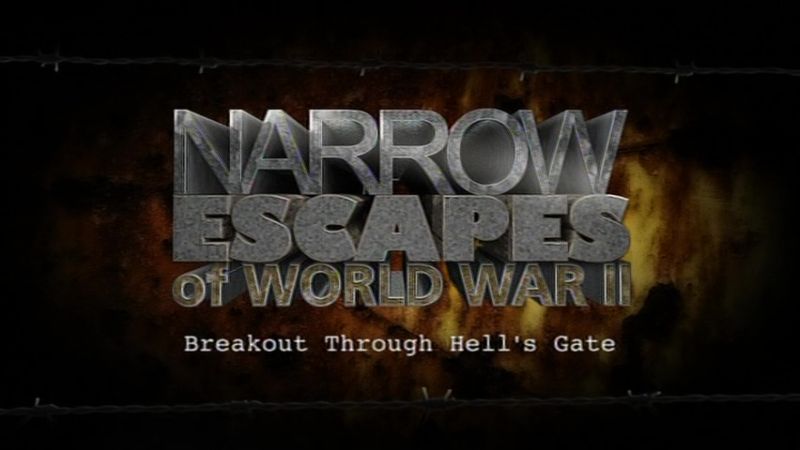Narrow Escapes of World War II episode 13: With their backs to the Dnieper River in January 1944, 60,000 German troops face encirclement by a larger Soviet force. After an airfield supplying the defenders falls to the Russians, their survival depends on rejoining the rest of the German army. They head for a narrow corridor flanked by Russian soldiers, tanks, artillery, and cavalry known thereafter as Hells Gate. This is the story of how Leon Degrelle together with a motley mixture of Finns, Estonians and fellow Belgians held off the might of the brilliant Russian General Marshal Georgiy Zhukov’s army. 40,000 men would escape from the Red Army’s grasp in a manoeuvre that became known as “the breakthrough at Hell’s Gate.”
He was the outstanding Russian General who had captured a huge German army at Stalingrad and he was hungry for more. Marshal Georgiy Zhukov was brilliant, ruthless and loved killing Germans. And it looked like he had done it again. 60,000 German soldiers were trapped, their backs against the River Dnieper as three million Russians moved in. But this time, Zhukov was up against a very unusual kind of Nazi. Leon Degrelle wasn t German at all. He was Belgian – a failed politician who, in his devotion to the Fuhrer had become a grunt soldier in an SS regiment. Together with a motley mixture of Finns, Estonians and fellow Belgians – he would hold off the might of Zhukov’s army enabling 56,000 men to escape.
Narrow Escapes of World War II tells the real stories of courageous and deadly fights against impossible odds. The extraordinary stories of heroes; men who stand up and fight when everything seems lost. Those brilliant generals, ferocious warriors and individual acts of courage that can turn the tide in a war, and whose stories can still be told as shining examples of bravery and courage. This series combines eyewitness and expert testimony with specially shot material, dramatic reconstruction and archive much of it previously unseen.
Revisit some of the most daring missions of World War II as recounted by leading historians, military experts, and occasionally by the participants themselves. These 13 gripping episodes feature operations that took place all over the world—from the jungles of Southeast Asia to the steppes of southern Russia, from the foothills of the Himalayas to the frozen waters of the Baltic and the skies over Nazi-occupied France. With the benefit of original film footage, informative maps, and dramatic recreations, Narrow Escapes tells stories of valor, suffering, dedication, and determination—exploits of bravery that helped shape the outcome of the Second World War and continue to inspire today.
Narrow Escapes of World War II episode 13
The Battle of Korsun–Cherkassy, also known as the Korsun–Shevchenkovsky Offensive, was a major World War II battle fought between Soviet and German forces in Ukraine. It took place from January 24 to February 17, 1944, and was a decisive Soviet victory. This battle is considered to be one of the largest and most important battles of the Eastern Front, and its outcome had a significant impact on the rest of the war.
Historical Background
The Battle of Korsun–Cherkassy was part of a larger offensive by the Soviet Red Army aimed at encircling and destroying German forces in Ukraine. The offensive began on January 5, 1944, with Soviet forces attacking along a front that stretched from the Baltic Sea to the Black Sea. The Germans were taken by surprise, and their defenses quickly crumbled under the Soviet onslaught. As Soviet forces advanced, the German high command realized that their troops were in danger of being encircled. In an effort to avoid this, they ordered a retreat to a more defensible position further west. However, the retreat was chaotic and disorganized, with many German units becoming separated and cut off from each other.
The Soviet high command saw the disorganized German retreat as an opportunity to inflict a major defeat on the enemy. They ordered their troops to pursue the retreating Germans and attempt to encircle them. The Soviet 1st and 2nd Ukrainian Fronts were tasked with this mission, and they quickly began to make progress. By January 25, the Soviet 6th Tank Corps had penetrated deep into German lines and had cut off the German 57th Infantry Division. The 1st Ukrainian Front was able to advance further west and cut off the German 5th SS Panzer Division “Wiking”. The Germans were now trapped in a pocket that was roughly 100 km long and 50 km wide, with the Dnieper River to the east and the Soviet forces closing in from all other directions.
The trapped German forces realized that they were in a dire situation and attempted to break out of the encirclement. However, the Soviet defenses were too strong, and the Germans were unable to make any significant progress. The Germans launched a number of desperate attacks, but they were repelled with heavy losses.
H3: Soviet Victory
After several days of heavy fighting, the German forces were exhausted and running low on supplies. On February 16, the Soviet forces launched a massive assault on the German lines. The attack was successful, and the Germans were forced to surrender on February 17. The Soviet victory at the Battle of Korsun–Cherkassy was a major blow to the German war effort, and it helped to set the stage for the eventual defeat of Nazi Germany.
The Battle of Korsun–Cherkassy was one of the largest and most important battles of World War II. The Soviet victory in this battle had a significant impact on the rest of the war, and it helped to pave the way for the eventual defeat of Nazi Germany. The Battle of Korsun–Cherkassy is a testament to the bravery and sacrifice of the soldiers who fought in it, and it serves as a reminder of the high cost of war.
